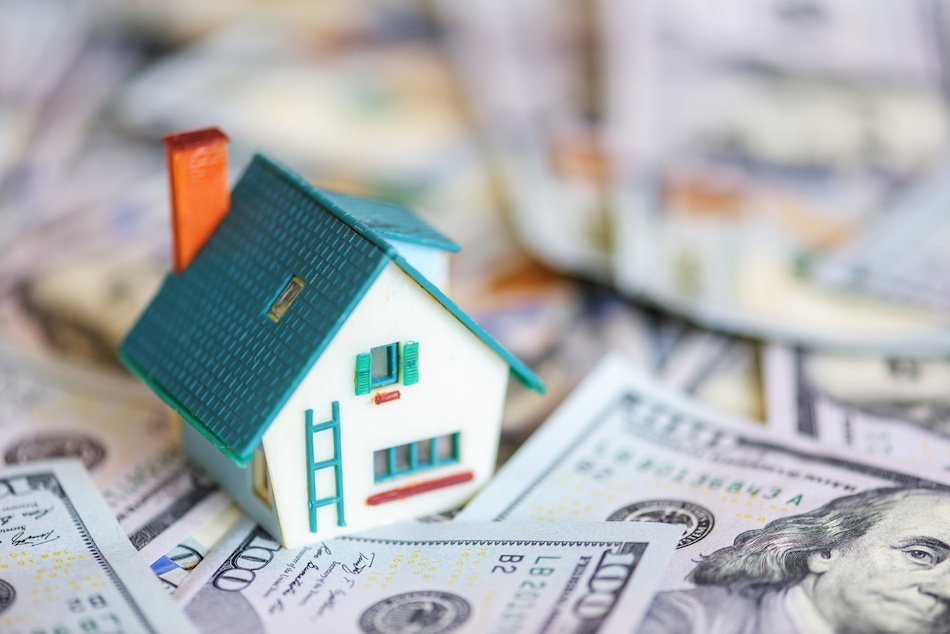Table of Content
This plan offers fixed-rate mortgage loans, down payment assistance and mortgage interest tax credits for prospective homebuyers. The TSAHC also offers assistance of 5% of the loan so new homebuyers can cover the cost of the down payment and any closing costs. Also, if you are a first-time homebuyer, you can receive a tax credit known as a Mortgage Credit Certificate that can save you up to $2,000 every year on your income taxes. TSAHC works with reputable lenders from all over Texas to give prospective buyers plenty of options.

Interest rate is the base fee for borrowing money, while the annual percentage rate is the interest rate plus the lender fees. APR gives you an accurate idea of the cost of a financing offer, highlighting the relationship between rate and fees. Modify the interest rate to evaluate the impact of seemingly minor rate changes. Knowing that rates can change daily, consider the impact of waiting to improve your credit score in exchange for possibly qualifying for a lower interest rate. Click the "Schedule" for an interactive graph showing the estimated timeframe of paying off your interest, similar to our amortization calculator.
Benefits of the “purchase without down payment” program
FHA loans, which you can get with as little as 3.5% down, are backed by the Federal Housing Administration and are loans for people who have low to moderate income. For these loans, you must plan to live in the property you’re buying as your primary residence, buy a home that meets livability standards and move in within 60 days of closing. Finally, many individual lenders offer first-time homebuyer programs of their own. For example, major banks may offer down payment assistance loans or low-down-payment grants. Be sure to ask your loan officer whether there are any grants you might qualify for as a first-time homebuyer.

Local and state DPA programs aren’t advertised often, and they’re promoted poorly. The U.S. Department of Housing and Urban Development maintains a semi-complete list of programs, listed by state, county, and city. Mortgage lenders are usually happy to accept any of these for a down payment. But, depending on how you pay, there are special rules you may need to be aware of. If you want to go this route, here are a few of the best low-money-down mortgages to consider.
First-Time Homebuyer Grants: What You Need to Know
Of course, you might decide to pay more than the required down payment for your home loan, depending on your financial goals. A bigger down payment can reduce your monthly mortgage payments and help you save on interest. A down payment isn’t the only out-of-pocket cost for first-time home buyers.

The upfront mortgage insurance, however, does not need to be paid in cash. The primary purpose of the SETH is to offer tax-exempt, single-family mortgage revenue bonds. Those bonds are also available for multi-family housing projects. Additionally, it does not administer any Section 8 programs or contracts. Often, the amount of a down payment and/or closing costs are the biggest hurdles to families believing they can afford to purchase a home.
Is PMI Is Bad ?
Other buyers use mortgage loans with no down payment requirement whatsoever. Prior to applying for down payment assistance, review the terms and conditions. Some DPA programs require buyers to finance with an FHA mortgage.

Check with your local agent to determine the purchase price limit based on the area in Texas where you are buying your home. Eligibility – As mentioned previously, you must be a veteran, a first-time homebuyer or someone who hasn’t owned a home in the last three years to be eligible. Deferred mortgages are available for up to $25,0000 via municipal governments and local foundations. They’re frequently limited to first-time buyers whose income falls below area averages and whose credit history shows a record of on-time payments.
Conventional loans (3% down)
If you want to get into a house sooner, it often makes sense to make a smaller down payment with what you have saved now . You can check out the USDA’s map of eligible areas to find out if your home qualifies. See expert-recommended refinance options and customize them to fit your budget. The administration and management of the program and distribution of funds would be the responsibility of the state finance departments.
U.S. Government Required Disclaimer – Commodity Futures Trading Commission. Futures and options trading has large potential rewards, but also large potential risk. You must be aware of the risks and be willing to accept them in order to invest in the futures and options markets. This website is neither a solicitation nor an offer to Buy/Sell futures or options. No representation is being made that any account will or is likely to achieve profits or losses similar to those discussed on this website. The past performance of any trading system or methodology is not necessarily indicative of future results.
You can contact your lender and request that they cancel your PMI plan as soon as you reach 20% equity in your home based on payments. The federal government first offered a tax credit to first-time homebuyers in 2008, in the midst of the Great Recession. Congress is considering relaunching a similar tax credit, which would give first-time homebuyers a 10% refund on their home’s purchase price, up to a maximum of $15,000. Some first-time homebuyer grants are designed to reduce the overall cost of a mortgage rather than minimize upfront costs. Grants like these can cut the interest rate on a 30-year mortgage by up to 2% APR, which will save buyers a significant amount of money in the long run. Many first-time homebuyer programs have additional eligibility requirements around income, home location, and other factors.
Eligible borrowers can buy a house with no money down but will still have to pay for closing costs. Alternatively, if you qualify for down payment assistance, the funds can often be used for closing costs as well. However, most down payment grants aren’t large enough to cover both the down payment and loan fees in full, so expect to pay to least part of your closing costs out of pocket. However, lender-paid closing costs typically come with higher interest rates. So while you’ll save money upfront, you could end up paying a lot more over the life of the loan.
The calculator divides that total by 12 months to adjust your monthly mortgage payment. Average annual premiums usually cost less than 1% of the home price and protect your liability as the property owner and insure against hazards, loss, etc. The Housing down payment assistance program helps the people in different ways and they have to follow some rules for applying for the assistance program.

Your debt-to-income ratio shouldn’t be higher than 45%, and you should have a FICO® Score of at least 640 for the best chance of qualification. Both you and your home must meet a few criteria to qualify for a USDA loan. Check out the USDA’s map of eligible areas to find out if your home qualifies. On this map, anywhere outside of an orange zone qualifies as a rural area. It must be a single-family unit and you must live in the home as your primary residence. These loans typically do need to be repaid, so they’re not technically grants.
Zero-down first-time home buyer loans
Other options, like the FHA loan and Conventional 97, offer low down payment options with as little as 3% down. And home buyers nationwide can apply for government grants and loans to cover their out-of-pocket costs. That makes it possible to get into a home with no money — or very little — down. A down payment will lower the amount you borrow which, in turn, can lower your monthly payments. For example, if you make a 20 percent down payment on a $200,000 loan, you’re borrowing only $160,000.
It can take years to save for a down payment, so no down payment mortgages make it easier for borrowers to afford a home. A down payment is a certain amount of money you pay upfront toward your mortgage. This amount is usually expressed as a percentage of the total loan amount. For many people, a down payment is one of the most significant barriers to homeownership. Making a 20% down payment isn’t feasible for many people, so they assume they can’t buy a house.

No comments:
Post a Comment